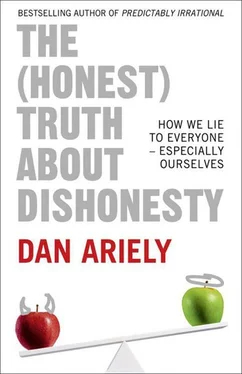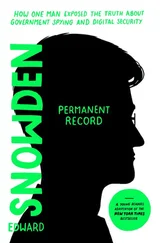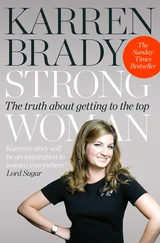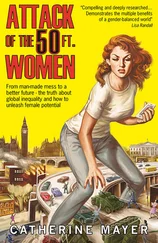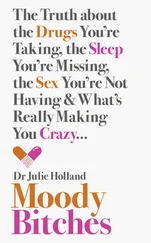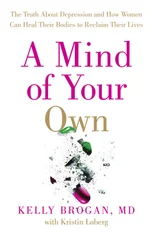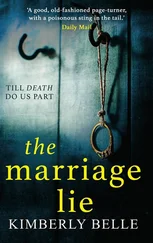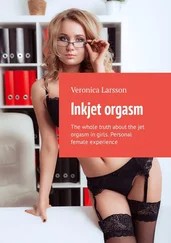Ariely, Dan - The (Honest) Truth About Dishonesty - How We Lie to Everyone – Especially Ourselves
Здесь есть возможность читать онлайн «Ariely, Dan - The (Honest) Truth About Dishonesty - How We Lie to Everyone – Especially Ourselves» весь текст электронной книги совершенно бесплатно (целиком полную версию без сокращений). В некоторых случаях можно слушать аудио, скачать через торрент в формате fb2 и присутствует краткое содержание. Жанр: Старинная литература, на английском языке. Описание произведения, (предисловие) а так же отзывы посетителей доступны на портале библиотеки ЛибКат.
- Название:The (Honest) Truth About Dishonesty: How We Lie to Everyone – Especially Ourselves
- Автор:
- Жанр:
- Год:неизвестен
- ISBN:нет данных
- Рейтинг книги:4 / 5. Голосов: 1
-
Избранное:Добавить в избранное
- Отзывы:
-
Ваша оценка:
- 80
- 1
- 2
- 3
- 4
- 5
The (Honest) Truth About Dishonesty: How We Lie to Everyone – Especially Ourselves: краткое содержание, описание и аннотация
Предлагаем к чтению аннотацию, описание, краткое содержание или предисловие (зависит от того, что написал сам автор книги «The (Honest) Truth About Dishonesty: How We Lie to Everyone – Especially Ourselves»). Если вы не нашли необходимую информацию о книге — напишите в комментариях, мы постараемся отыскать её.
The (Honest) Truth About Dishonesty: How We Lie to Everyone – Especially Ourselves — читать онлайн бесплатно полную книгу (весь текст) целиком
Ниже представлен текст книги, разбитый по страницам. Система сохранения места последней прочитанной страницы, позволяет с удобством читать онлайн бесплатно книгу «The (Honest) Truth About Dishonesty: How We Lie to Everyone – Especially Ourselves», без необходимости каждый раз заново искать на чём Вы остановились. Поставьте закладку, и сможете в любой момент перейти на страницу, на которой закончили чтение.
Интервал:
Закладка:
The researchers then gave 108 job seekers a battery of psychological tests and conducted several one-on-one interviews with them, their coworkers, and their family members in order to identify major discrepancies that might reveal the pathological liars. In this group, they found twelve people who had pervasive inconsistencies in the stories they told about their work, schooling, crimes committed, and family background. They were also the same individuals who frequently engaged in malingering, or pretending that they were sick in order to get sickness benefits.
Next, the team put the twelve pathological liars—plus twenty-one people who were not pathological liars and were in the same pool of job seekers (the control group)—through a brain scanner to explore each person’s brain structure. The researchers focused on the prefrontal cortex, a part of the brain that sits just behind our foreheads and is considered to be in charge of higher-order thinking, such as planning our daily schedule and deciding how to deal with temptations around us. It’s also the part of the brain that we depend on for our moral judgments and decision making. In short, it’s a kind of control tower for thinking, reasoning, and morality.
In general, there are two types of matter that fill our brains: gray and white. Gray matter is just another name for the collections of neurons that make up the bulk of our brains, the stuff that powers our thinking. White matter is the wiring that connects those brain cells. We all have both gray and white matter, but Yang and her collaborators were particularly interested in the relative amounts of the two types in the participants’ prefrontal cortices. They found that pathological liars had 14 percent less gray matter than the control group, a common finding for many psychologically impaired individuals. What could this mean? One possibility is that since the pathological liars had fewer brain cells (the gray matter) fueling their prefrontal cortex (an area crucial to distinguishing between right and wrong), they find it harder to take morality into account, making it easier for them to lie.
But that’s not all. You might wonder about the extra space that pathological liars must have in their skulls since they have so much less gray matter. Yang and her colleagues also found that pathological liars had 22 to 26 percent more white matter in the prefrontal cortex than non–pathological liars. With more white matter (remember, this is what links the gray matter), pathological liars are likely able to make more connections between different memories and ideas, and this increased connectivity and access to the world of associations stored in their gray matter might be the secret ingredient that makes them natural liars.
If we extrapolate these findings to the general population, we might say that higher brain connectivity could make it easier for any of us to lie and at the same time think of ourselves as honorable creatures. After all, more connected brains have more avenues to explore when it comes to interpreting and explaining dubious events—and perhaps this is a crucial element in the rationalization of our dishonest acts.
More Creativity Equals More Money
These findings made me wonder whether increased white matter could be linked to both increased lying and increased creativity. After all, people who have more connections among their different brain parts and more associations are presumably also more creative. To test this possible link between creativity and dishonesty, Francesca Gino and I carried out a series of studies. True to the nature of creativity itself, we approached the question from a variety of angles, starting with a relatively simple approach.
When our participants showed up at the lab, we informed them that they would answer some questions followed by a computerized task. The question set included many irrelevant questions about their general experiences and habits (these filler questions were designed to obscure the real intent of the study) and three types of questions that were the focus of the study.
In the first set of questions, we asked the participants to indicate to what degree they would describe themselves using some “creative” adjectives (insightful, inventive, original, resourceful, unconventional, and so on). In the second, we asked them to tell us how often they engage in seventy-seven different activities, some of which require more creativity and some less (bowling, skiing, skydiving, painting, writing, and so forth). In the third and last set of questions, we asked participants to rate how much they identified with statements such as “I have a lot of creative ideas,” “I prefer tasks that enable me to think creatively,” “I like to do things in an original way,” and other similar statements.
Once the participants completed the personality measures, we asked them to complete the dots task, which was presumably unconnected to the questions. In case you don’t recall this task, flip back to The “What- the- Hell” Effect in chapter 5, “Why Wearing Fakes Make Us Cheat More.”
What do you think happened? Would participants who chose a large number of creative adjectives, engaged in creative activities more frequently, and viewed themselves as more creative cheat more, less, or about the same as the participants who were not as creative?
We found that participants who clicked the more-on-right button (the one with the higher payout) more often tended to be the same people who scored higher on all three creativity measures. Moreover, the difference between more and less creative individuals was most pronounced in the cases where the difference in the number of dots on the right and left sides was relatively small.
This suggested that the difference between creative and less creative individuals comes into play mostly when there is ambiguity in the situation at hand and, with it, more room for justification. When there was an obvious difference between the number of dots on the two sides of the diagonal, the participants simply had to decide whether to lie or not. But when the trials were more ambiguous and it was harder to tell if there were more dots to the right or the left of the diagonal, creativity kicked into action—along with more cheating. The more creative the individuals, the better they were at explaining to themselves why there were more dots to the right of the diagonal (the side with the higher reward).
Put simply, the link between creativity and dishonesty seems related to the ability to tell ourselves stories about how we are doing the right thing, even when we are not. The more creative we are, the more we are able to come up with good stories that help us justify our selfish interests.
Does Intelligence Matter?
Although this was an intriguing result, we didn’t get too excited just yet. This first study showed that creativity and dishonesty are correlated, but that doesn’t necessarily mean that creativity is directly linked to dishonesty. For example, what if a third factor such as intelligence was the factor linked to both creativity and dishonesty?
The link among intelligence, creativity, and dishonesty seems especially plausible when one considers how clever people such as the Ponzi schemer Bernie Madoff or the famous check forger Frank Abagnale (the author of Catch Me If You Can ) must have been to fool so many people. And so our next step was to carry out an experiment in which we checked to see whether creativity or intelligence was a better predictor of dishonesty.
Again, picture yourself as one of our participants. This time, the testing starts before you even set foot in the lab. A week earlier, you sit down at your home computer and complete an online survey, which includes questions to assess your creativity and also measure your intelligence. We measure your creativity using the same three measures from the previous study, and measure your intelligence in two ways. First, we ask you to answer three questions designed to test your reliance on logic versus intuition using a set of three questions collected by Shane Frederick (a professor at Yale University). Along with the correct answer, each question comes with an intuitive answer that is in fact incorrect.
Читать дальшеИнтервал:
Закладка:
Похожие книги на «The (Honest) Truth About Dishonesty: How We Lie to Everyone – Especially Ourselves»
Представляем Вашему вниманию похожие книги на «The (Honest) Truth About Dishonesty: How We Lie to Everyone – Especially Ourselves» списком для выбора. Мы отобрали схожую по названию и смыслу литературу в надежде предоставить читателям больше вариантов отыскать новые, интересные, ещё непрочитанные произведения.
Обсуждение, отзывы о книге «The (Honest) Truth About Dishonesty: How We Lie to Everyone – Especially Ourselves» и просто собственные мнения читателей. Оставьте ваши комментарии, напишите, что Вы думаете о произведении, его смысле или главных героях. Укажите что конкретно понравилось, а что нет, и почему Вы так считаете.
